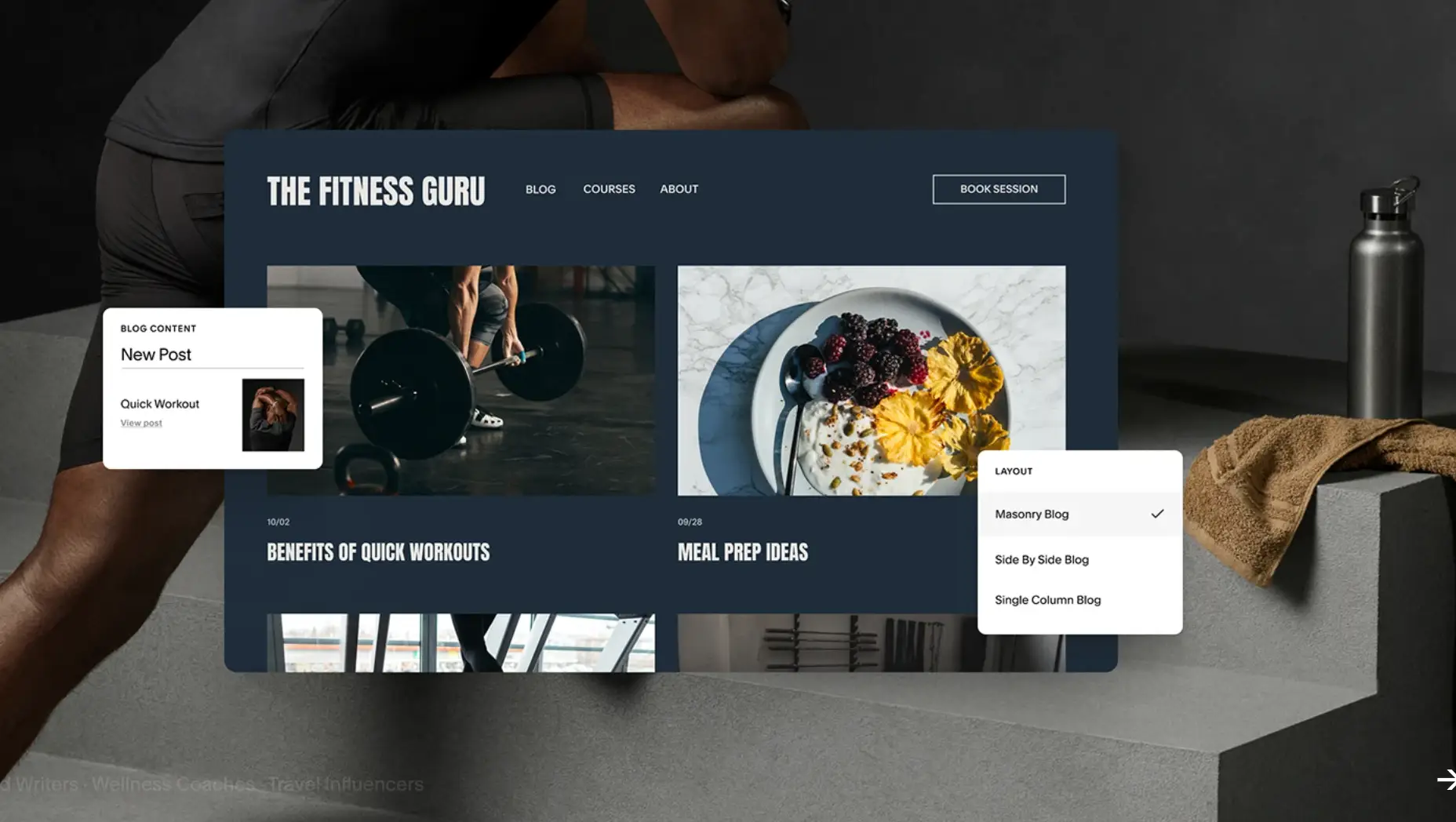How to Build Brand Awareness Through SEO: An Ultimate Guide
Updated on
Published on

SEO is almost every marketer’s “go-to move” for getting their business in front of more people who are actually interested in their offering. But often, its results go far beyond just search engine results pages. The thing is that better rankings can increase your brand exposure across a variety of platforms (not just in Google). And everyone knows what it means – more web traffic, conversions, and leads, not to mention the recognition that comes with better brand visibility.
Still, many business owners are not quite sure how search engine optimization works or even what makes it so effective. So, in this guide, we will be looking at how to use SEO for branding and how you can make the most of it.
How Does SEO Affect Brand Awareness?
SEO affects brand awareness in a lot of ways. In fact, it is directly responsible for how many people even get to know your business exists, let alone form a bond with your brand. About 81% of customers will first check online before buying anything. If your brand is not on their radar that means you are already losing money.
On the other hand, if your SEO game is decent, that means your visibility is also going to be quite good. You will rank higher in search results, maybe even be among the top 3, where people can easily see what you are offering. And as everyone knows, those are the positions that get the most clicks.
For most businesses, though, the idea of search engine optimization begins and ends with SEO content. Truth is, with how competitive everything has become, it's going to take more than just great blogs to outrank your competition. That's why many marketers partner with creators so they can get contextual backlinks, become more visible, and contribute to their industry leadership.
Can Brand Awareness Improve Your Search Rankings?
While using SEO for branding will improve the visibility of your brand, it also works the other way around. Having a great reputation and being easily recognizable as an authority in your niche can also improve your search rankings. This works best when you have popular websites mentioning your brand in their blog posts, reviews, etc.
For example, what do you think about when they say "stylish gadgets"? Apple. How about electric cars? Tesla. The most popular fast food? McDonald's. A luxury watch? Rolex. Even when those companies “sneeze,” they appear on the news. These are all brands that get mentions in lots of reviews on high-authority websites like Forbes, The Washington Post, The Verge, etc. Most of the time, these posts are also positive, which contributes to a good brand image.

As a result, these brands are building an industry leadership that leads to people thinking of them before others that offer similar products and services. Remember what we said earlier about contextual backlinks? Turns out that when people associate your brand with other credible sources, they are more likely to link to you, cite you, or mention your case in their articles. That’s how SEO and brand awareness go hand in hand to complement your marketing efforts.
5 Steps to Use SEO for Branding Effectively
Every business wants traffic, and many have tried PPC and SEO, SMM and PR, or even all of them at the same time. Still, no matter what techniques they use, everyone eventually circles back around to SEO for branding, and that’s because it works. Best part? It’s not that complicated. All you need to do is:
#1 Tweak Your Keyword Approach
The first part of any successful use of SEO for brand awareness starts with perfecting your keyword strategy. In a nutshell, you do keyword research to find all the relevant words and phrases people use to look for businesses similar to yours. This helps you get to know what your audience wants, which is important if you want to improve your brand awareness.
But rather than just use the primary keywords to create some blog posts and call it a day, you want to use everything (or at least as much as you can). Let’s break it down. Besides the primary keywords, you also have long-tail keywords, which are other related terms people can use in their searches.
Long-tail keywords actually account for 50% of all searches and get 2-3x more clicks, too. So, if you only focus on the main keywords, you might be losing lots of traffic. Besides, for most sites, it will be much harder to rank just using the primary keywords, as they are highly competitive. At the same time, while long-tail keywords have less search volume, they can give you a chance to get to the top of Google results easier.
#2 Nothing But the Best of Content
Yes, SEO is the key to dominating search results, but you still have to do it right. Making all that effort to revamp keywords is no good unless you actually use them to create content people want to see. Apart from bringing backlinks to your “yard,” your content plays a crucial role in how people perceive your company.
So, your SEO branding strategy must prioritize useful, relevant, and engaging content. If your readers feel good about the stuff you publish, then they will feel good about recommending your brand to others. That’s clear, but how do you know whether your content is actually good and meets Google’s guidelines?
- Share your expertise, knowledge, real-life examples, and experience. But also make sure you are focusing on solving your audience's problems or challenges (i.e., pain points).
- Take a look at what your competitors are putting out there, and note what is working best for them. What is getting the most engagement and positive feedback from their customers and readers? Can you apply it to your own content? If so, go for it. Maybe it will be your next big thing. So, for example, if podcasts work best for your competition, then consider at least trying to add that to your content strategy.
- Make sure to use keywords and semantically related words to optimize your posts, meta titles, meta descriptions, alt tags, etc. This way, you will increase your chances of ranking for those keywords.
- Get bonus points by creating content that is shareable (e.g., infographics, charts, tables, visualizations, fun videos, unexpected interactions, etc.) so that more people can get to see it.
#3 Get Quality Backlinks to Build Positive Associations
Pages with the most backlinks are those that get to show up on the first page of Google search results. According to the Semrush study, over 92% of websites in the top 100 for at least 13 months had backlinks, while more than half of those that never made it to the top 10 didn’t have even one backlink.
The picture is clear. If you manage to snag more quality links than all the other sites trying to rank for the same keywords, you end up among the first ones on SERPs. But how do you achieve this? If you have been making great content, then you are already off to a good start, but there are also other things you should keep in mind.
The Niche Guru recommends guest posting since it is a Google-friendly tactic that works well. This is where you write for other websites to increase your brand awareness and get a backlink. Here are some quick tips to get the most out of this tactic:
- Since backlinks are basically virtual thumbs up, you want to focus only on niche-relevant high-quality sites. Random pages will only bring you random results.
- Even with high-DR web pages, it’s much better to go for those with good current organic traffic, low spam scores, and unique SEO content.
- Some sources (including the Semrush study we’ve already mentioned) show it’s sometimes better to send filler emails first before sending in your pitch. Still, your pitch has to be good anyway, and your content must deliver on all your promises.
#4 Keep an Eye on How Often People Look Up Your Brand

Branded searches are your key to knowing how often people think of your company, products, and services. By tracking these, you can quickly catch any negative brand mentions or false news and address them before they get out of hand. Negative brand sentiments from customers should not be ignored. When you respond quickly in a kind, professional manner and try to fix the issue, it shows you care about your clients.

Besides, tracking branded searches is helpful for understanding the effectiveness of your marketing strategy so far. If you see an increase in the number of searches for your brand name, that means your efforts are paying off. But if not, then that’s probably a sign that something is not quite right. It might be a sign that you need to tweak your current tactics. Sometimes, though, the issue could be with the site itself, which brings us to the next tip.
#5 Improve Your Website Discoverability
Truth is, doing business online gets tougher from time to time. Before you start bombarding websites about work in advertising to find someone who can finally improve your positions in Google search, audit your site to understand how your performance is. Often, it is the main problem that doesn't allow websites to get better rankings.
Don’t forget that search engine optimization techniques are all about providing people with the best experience. So, if you are serious, then this needs to be one of your priorities. Start by doing a sitewide audit. There are lots of SEO tools for that. This gives you an “under-the-hood” view of how your website is really doing.
You want to check that your site is crawlable and has no broken links, your Core Web Vitals report looks good, and nothing else is off. If you do find any issues, don’t panic. Most tools also suggest ways to fix those problems. Just resolve them quickly, and your traffic (including the branded search volume) will get higher.
Conclusion
There are many good tips out there on how to combine branding and SEO in your marketing to get the best outcome. The goal is not to use them all but to find the ones that work best for your own needs. Happy customers equal even more traffic thanks to the uptick of organic referrals that come with improved service. By leveraging a comprehensive database of customer interactions and preferences, you can focus on how to improve your customer’s experience and offer them the kind of service they can’t get anywhere else, making the process easier.







